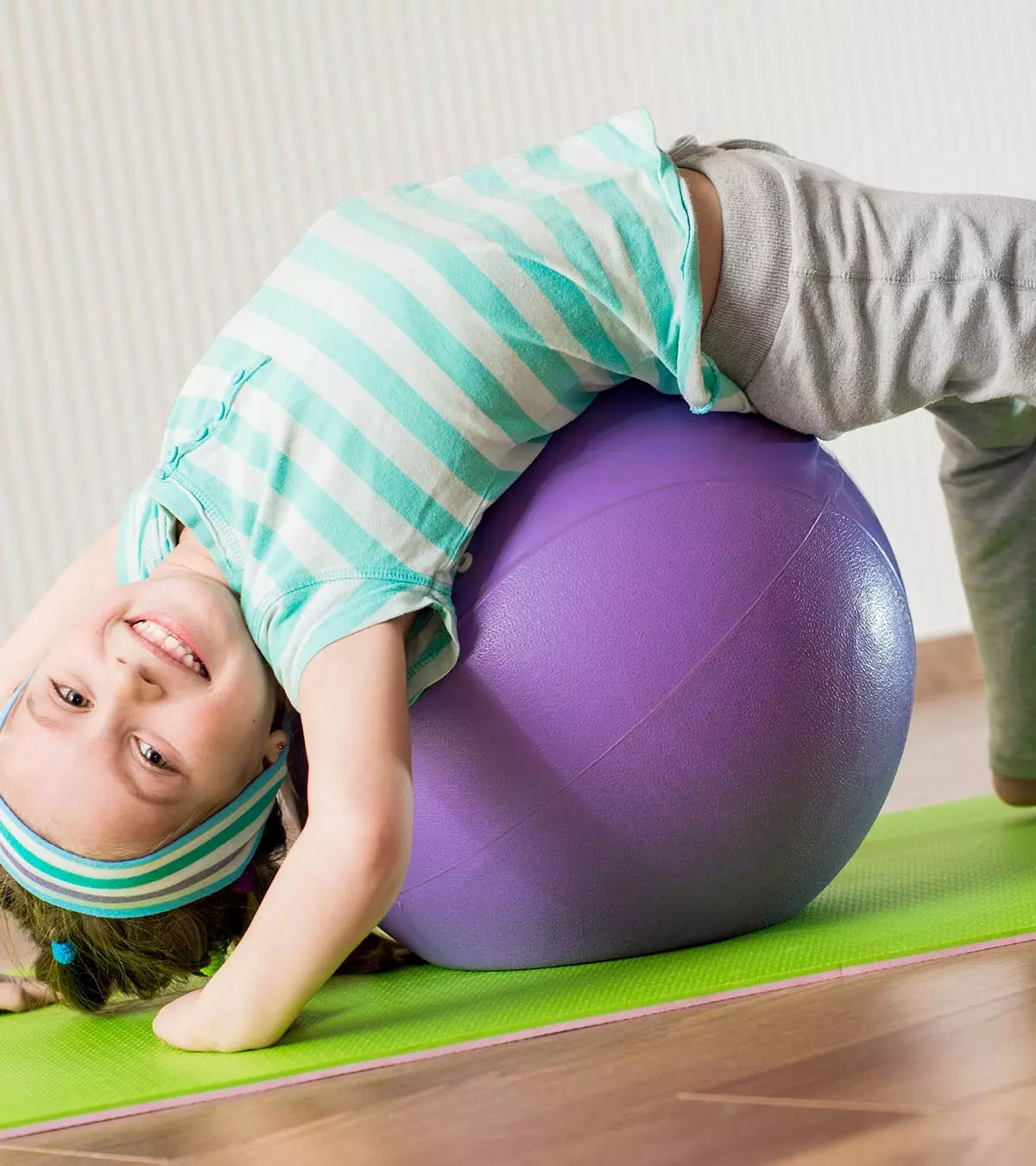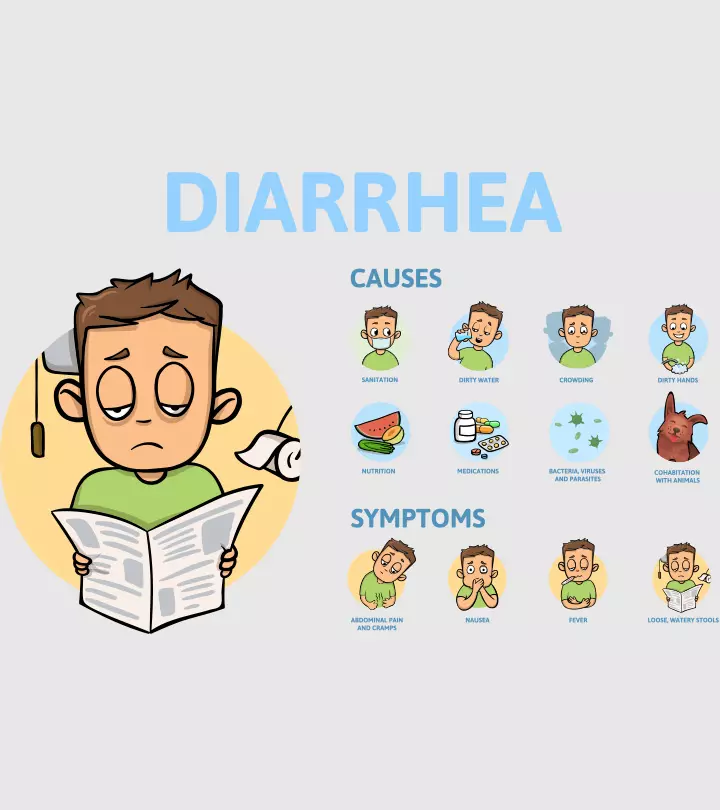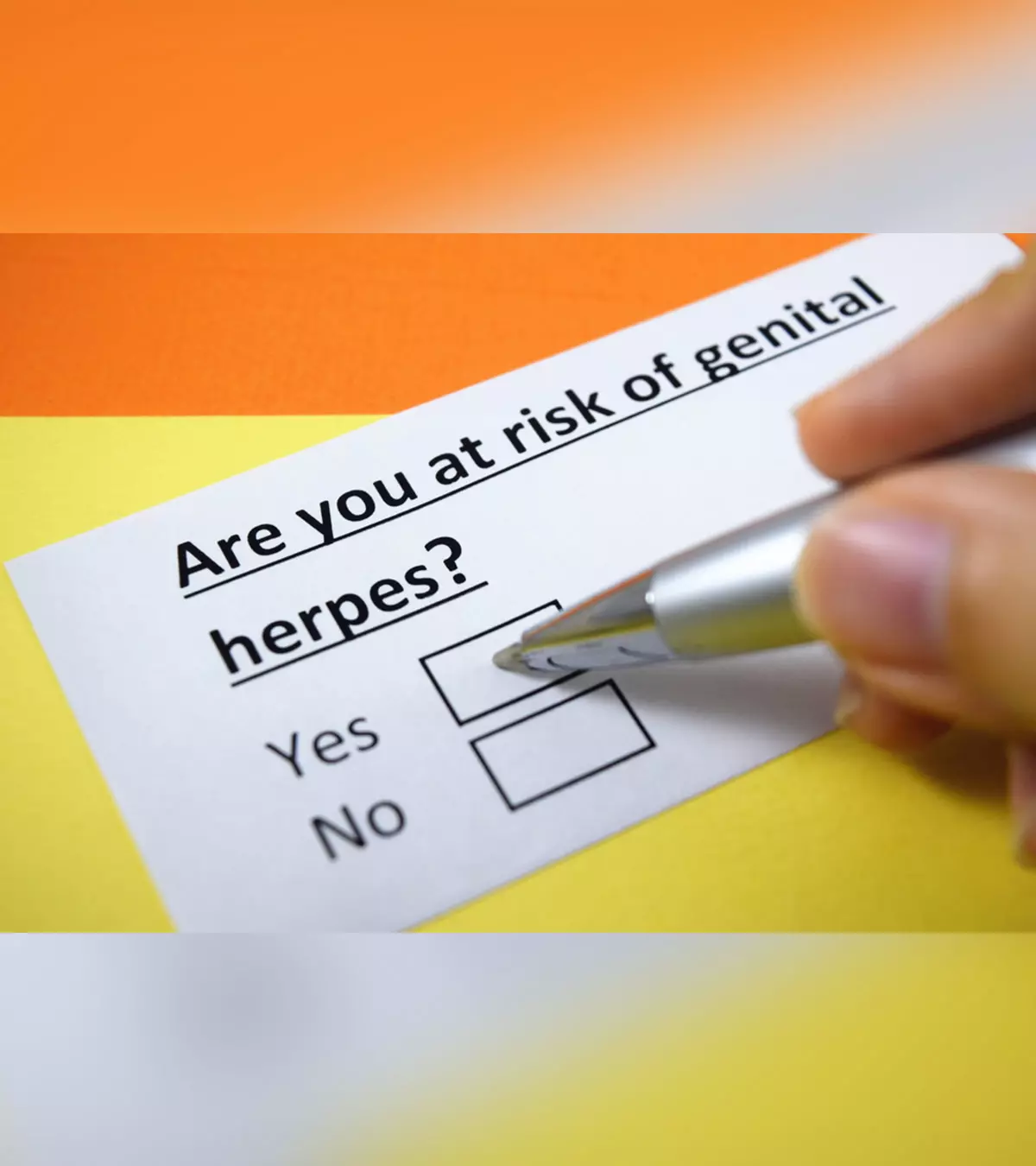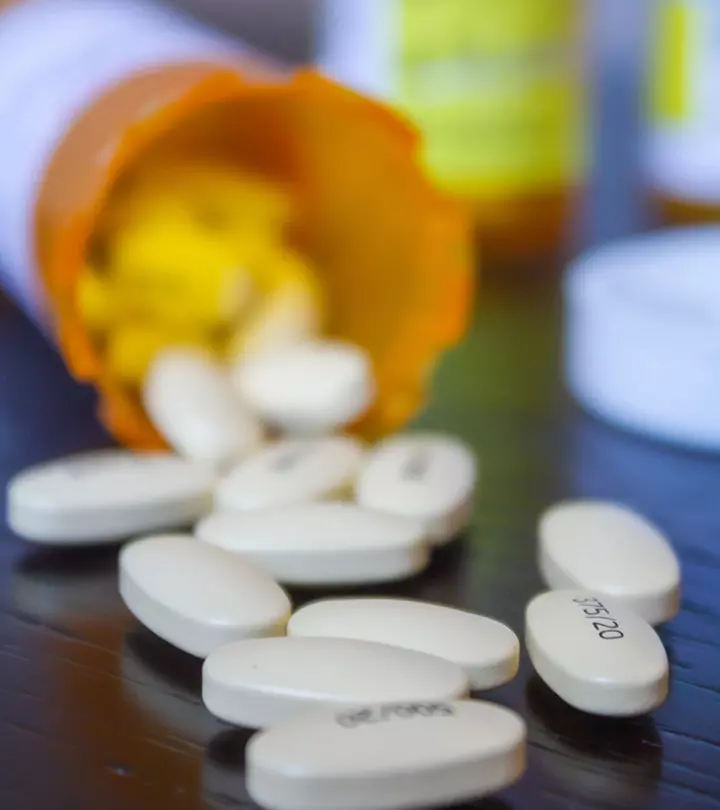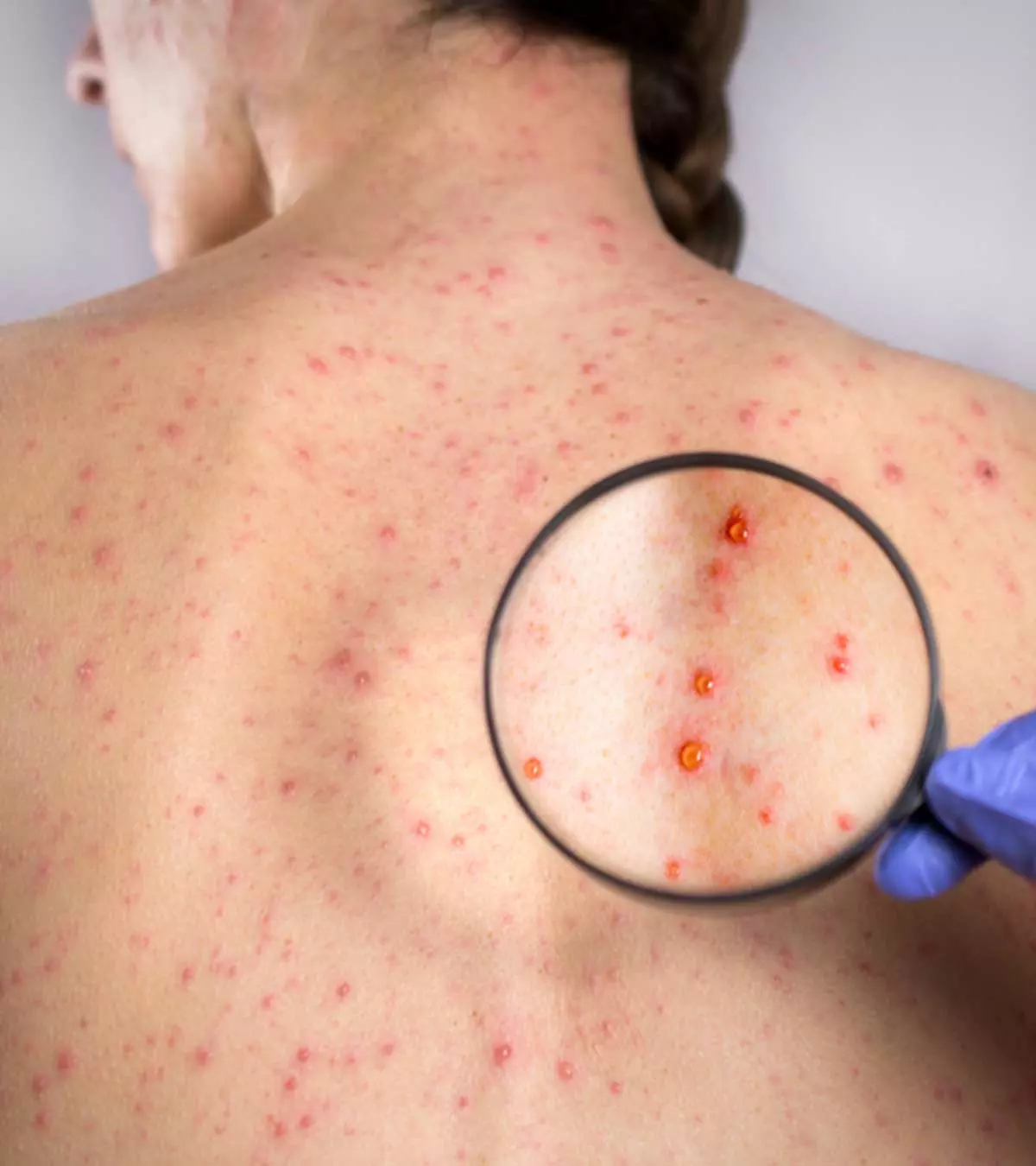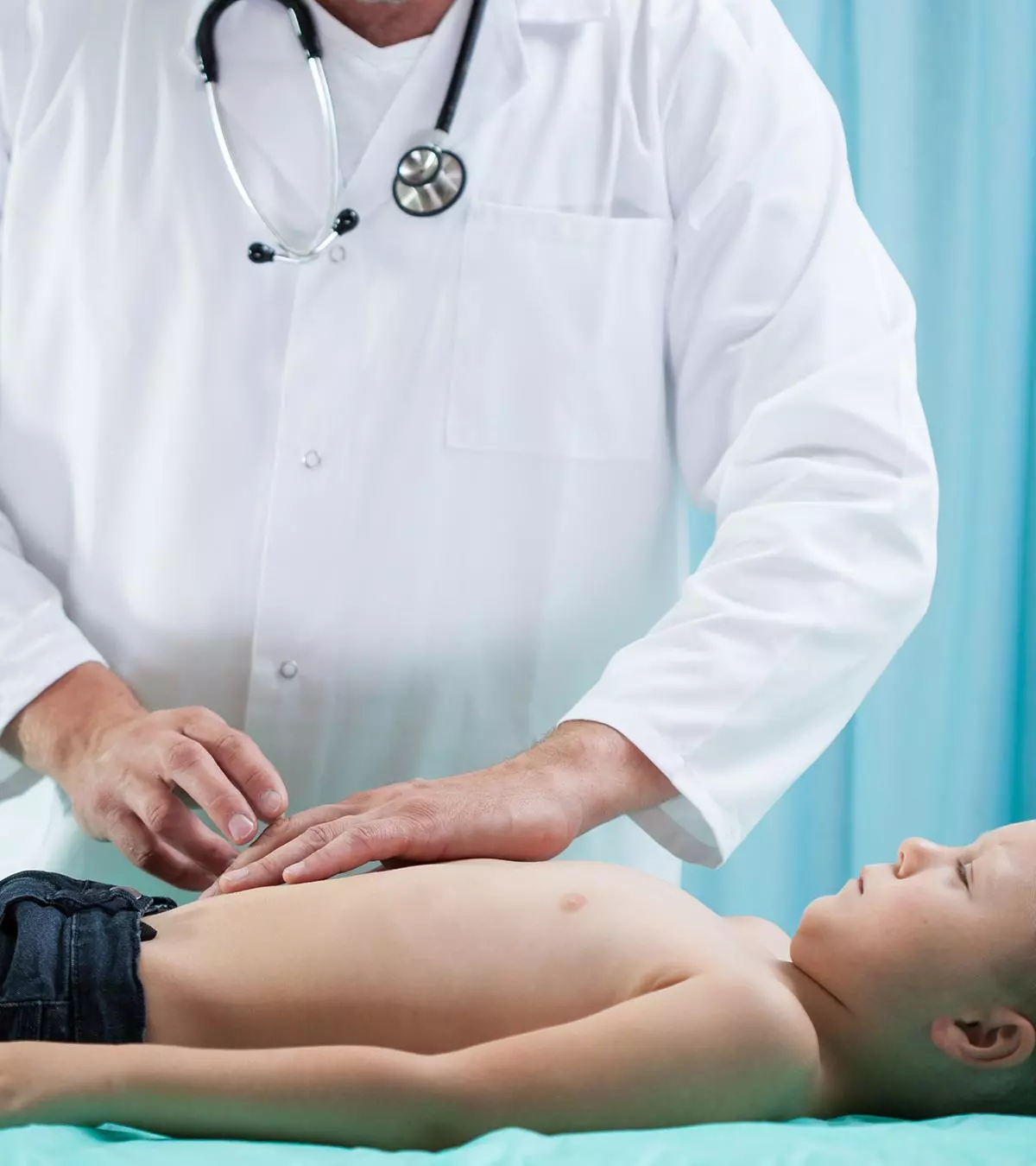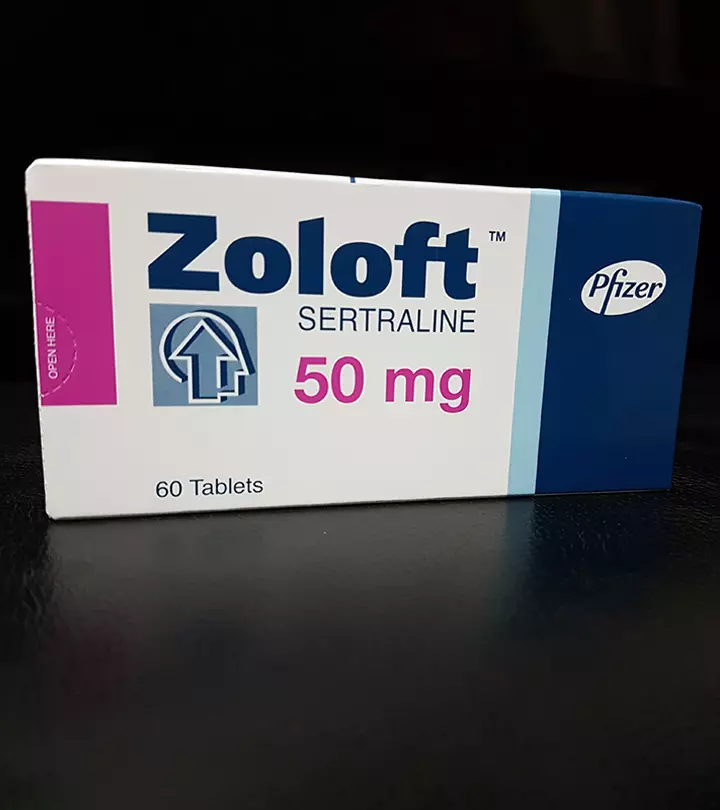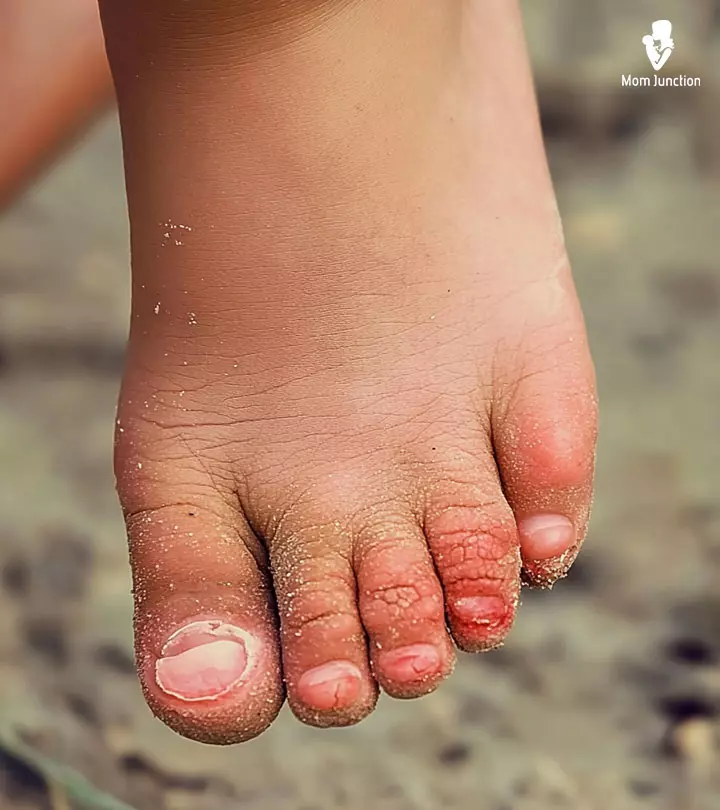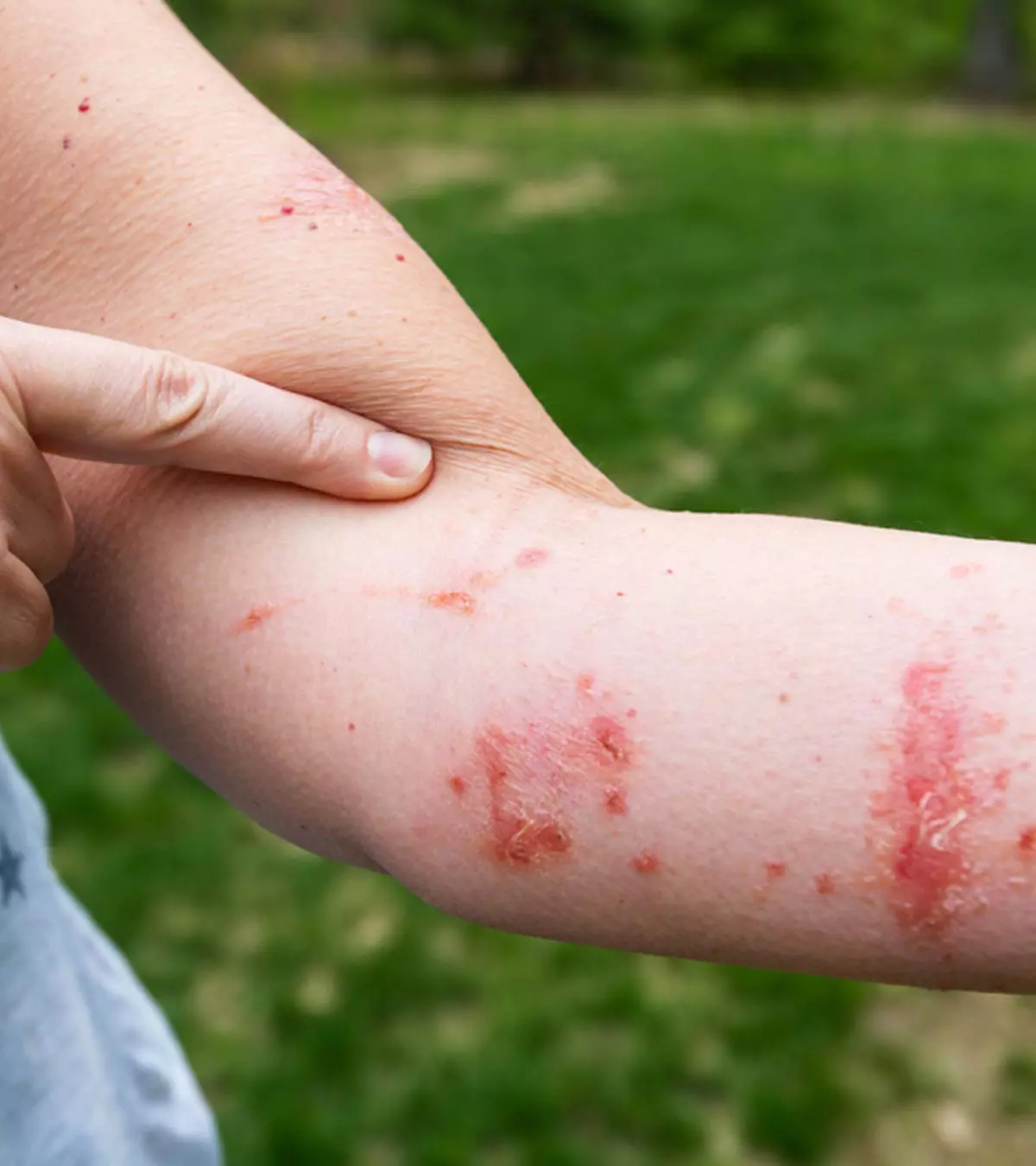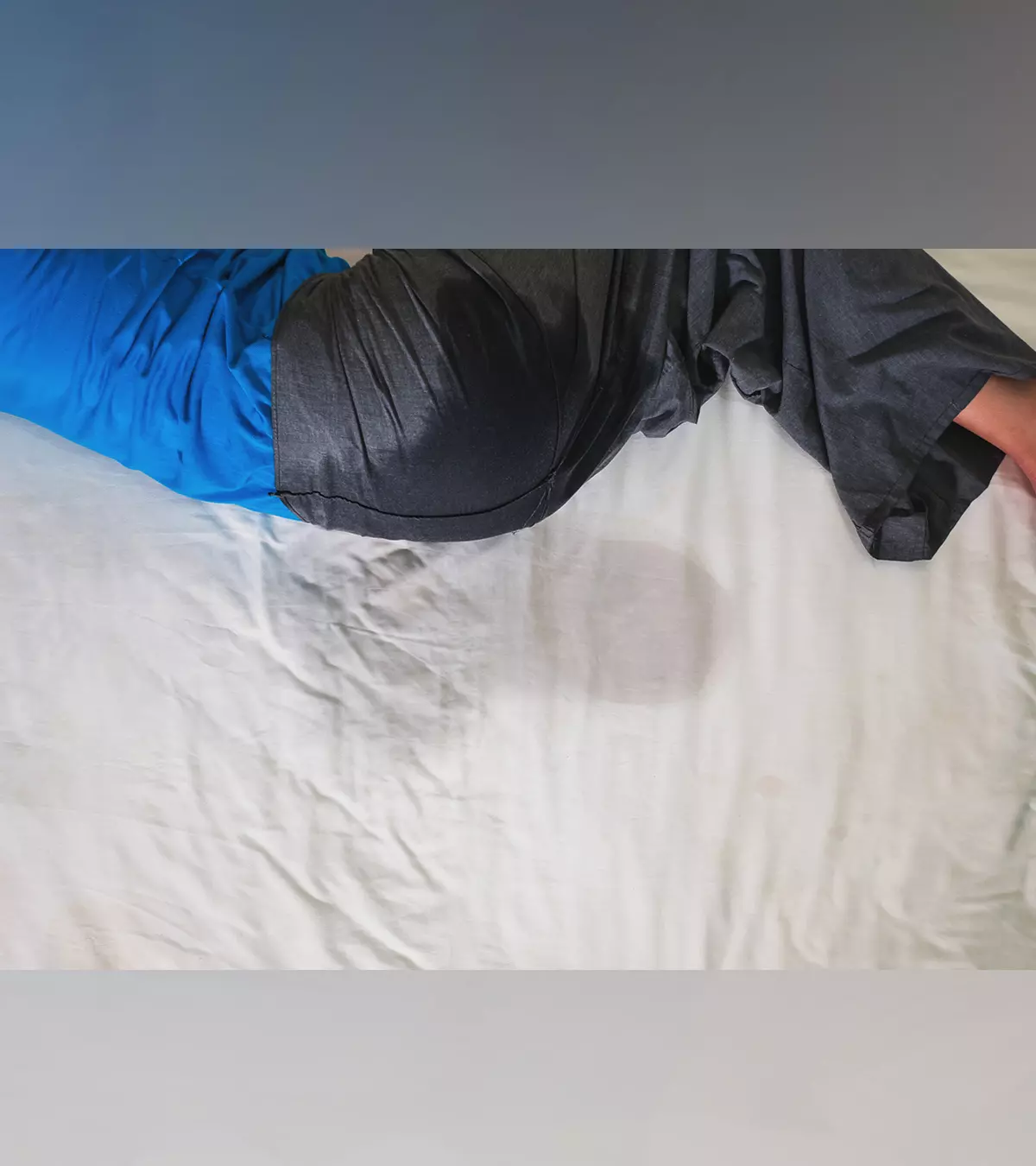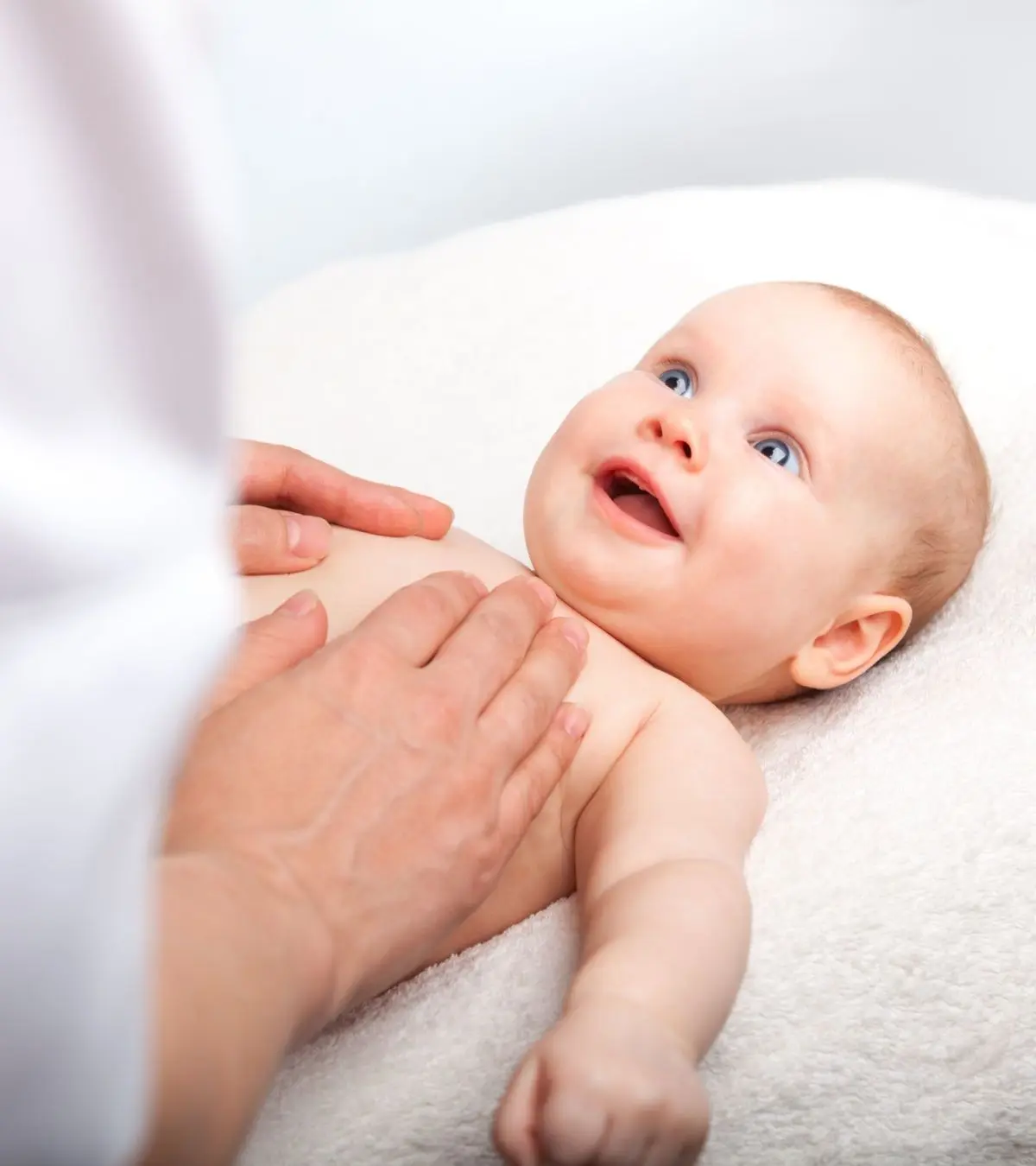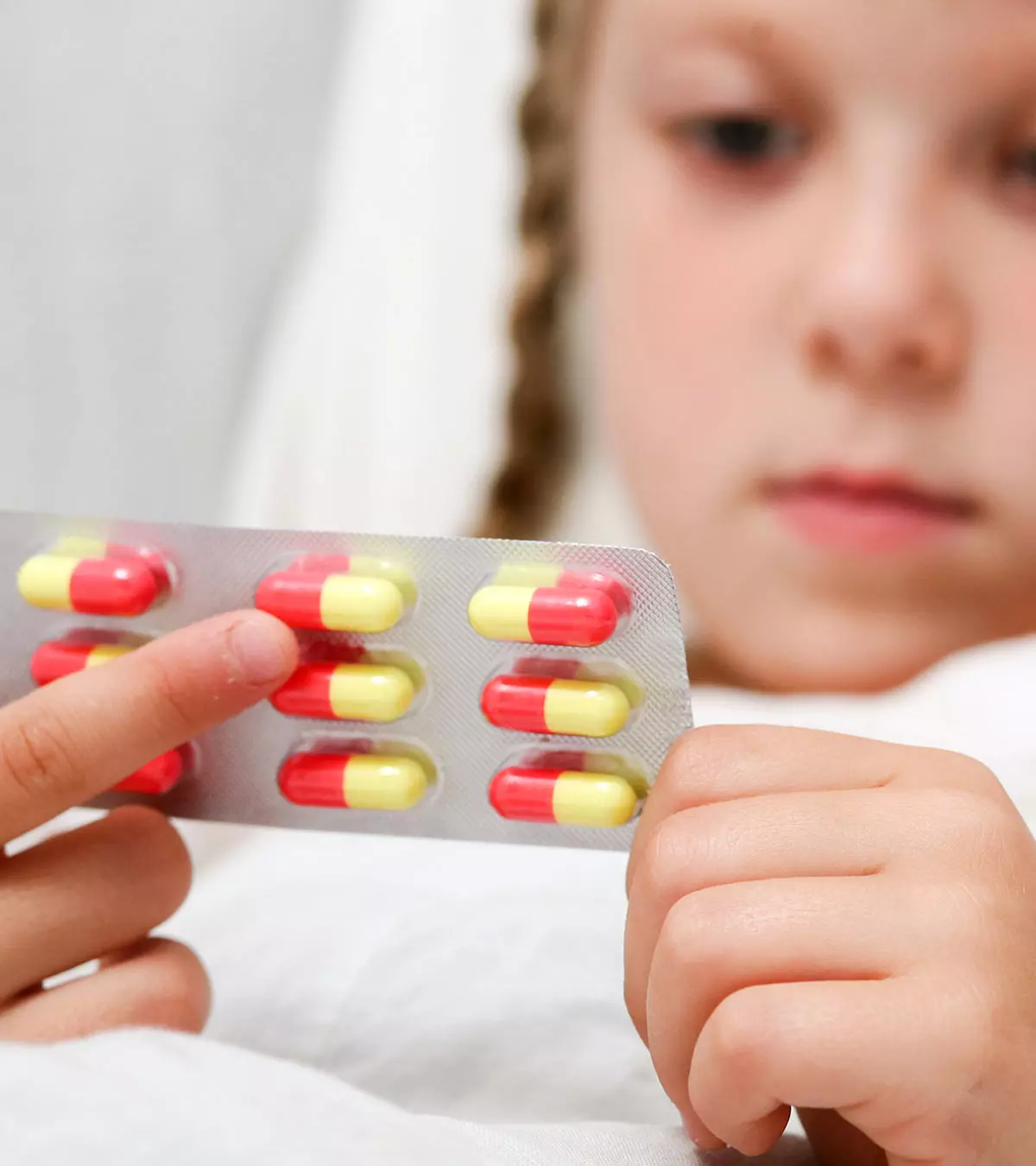
Image: ShutterStock

Antibiotics are medications used to treat a bacterial infection. The most common antibiotic prescribed is amoxicillin. However, as every medication prescribed to a child could concern parents, we discuss amoxicillin’s pediatric dosage in this post. Therefore, you may gather all the information before giving it to your children. Previously, the medicine was prescribed frequently. However, these days, it is only being prescribed if deemed necessary to avoid any future complications. However, if your doctor has prescribed amoxicillin, there are a few points that you must remember that we discuss in the post, along with its usage, dosage, and side effects.
Key Pointers
- Amoxicillin is a penicillin antibiotic used to treat bacterial infections and should not be used for viral infections.
- The World Health Organization (WHO) has recommended it as the most effective and safest medication for children.
- Amoxicillin can interact with other over-the-counter (OTC) and prescription medications, vitamins, and herbal products.
- Serious allergic reactions in children can be caused by amoxicillin, which requires immediate medical attention.
- Other side effects of amoxicillin include vomiting, diarrhea, stomach pain, blisters, loss of appetite, decreased urination, etc.
- The dosage of amoxicillin prescribed for a child is determined by their age, weight, and the severity of their infection.
What Is Amoxicillin?
Amoxicillin is a penicilliniAn antibiotic used to cure an infection caused by bacteria antibiotic used for treating bacterial infections including strep throat (a streptococcal infection), skin infections, pneumonia, sinusitisiAn infection caused by bacteria, viruses, or fungus characterized by swelling in the air cavities close to the nose, forehead, and eyes , bronchitis, urinary tract infections and middle ear infections (1). However, this medicine is not recommended for treating any viral infections such as flu or cold (2).
The World Health Organization has listed amoxicillin as the most effective and safe medicine for children. It is available as capsules, chewable tablets, tablets, and oral suspensions, and is usually given three times a day in eight-hour intervals or as prescribed by a doctor (3).
Amoxicillin is available in the US market under the brand name Amoxil, Amoxicot, Moxatag, Trimox, DisperMox, and Moxilin.
When Is Amoxicillin Prescribed For Your Child?
Amoxicillin is prescribed for the below ailments:
- Whooping coughiA contagious bacterial infection that can be spread by coming in contact with an infected person or surface or pneumonia
- Worsened sinus infection
- Prolonged cough of more than 14 days
- A recurrent fever of 102° F
- Yellow-green nasal discharge
- Lower respiratory throat infection (lung infection)
- Otitis media (ear infection)
- E.coli-induced UTI
- Amoxicillin dosage for strep throat in children is decided based on the result of a throat culture and rapid strep test.
The antibiotic is also used for:
- Severe malnutrition in children (4).
- Stomach ulcersiOpen sores that appear on the stomach's lining and can result in vomiting, nausea, and stinging stomach pain caused by H.pylori infection (used in combination with another antibiotic clarithromycin) (5).
- Stomach acidsiAcids discharged by the glands in the stomach wall into the stomach to ease the digestion process (used in combination with lansoprazole) (6).
- Pneumonia in infants (in combination with gentamicin) (7).
As the medicine is available in various forms, which one is the best for your child? Or what would the doctor prescribe?
How To Use/ Not Use Amoxicillin For Children?
Here is how you can take the drug in various forms:
- When taken as a capsule, it should be swallowed with a glass of milk, juice or water.

- When taking as an oral suspension, dilute the medicine with milk or water using a dosing syringe or a special dose-measuring spoon or a medicine cup. For infants and babies, you can mix the medicine with breast milk or formula and place it directly on the tongue.
- When taking a chewable tablet, ask your child to chew the tablet well before swallowing.
- When taking ER tablets, do not chew or crush the tablet but swallow with water or milk.
The antibiotic needs to be taken as per the instructions on the label or as told by your doctor. It can be taken with or without food.
There are a few more things for you to make a note of:
The drug interacts with over-the-counter and prescription medicines, vitamins and herbal products. So, if your child is taking any of these medicines, inform your physician about it before he prescribes amoxicillin. (Scroll down for the list)
- Tell the doctor if your child is allergic to penicillin so that he does not prescribe amoxicillin.
- Make a note of the medicines, foods, preservatives, dyes, and animals to which your child is allergic, and share it with the doctor.
- Amoxicillin can cause serious allergies in kids. One such allergic reaction is called anaphylaxis (8). It is associated with symptoms like tightness or swelling of the throat and difficulty in breathing. Your child might look pale and floppy. This condition needs immediate medical attention.
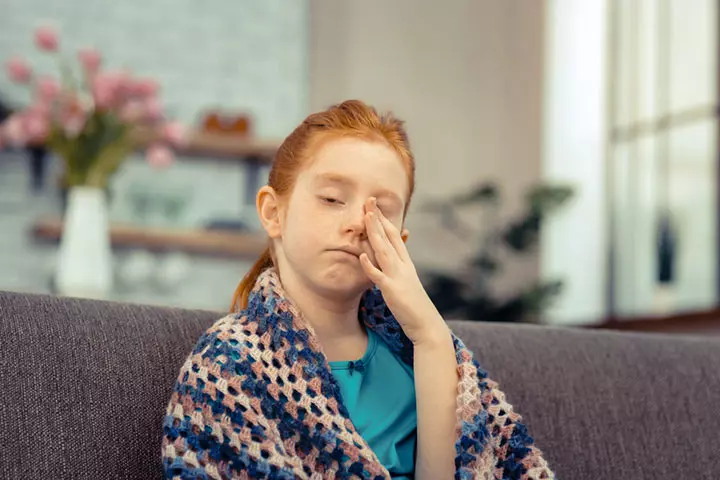
- If your child has any kidney issues, asthma, hay feveriAn allergic reaction to environmental triggers, like pollen, weeds, and dust mites, resulting in a runny and itchy nose and sneezing , hivesiRaised, red, itchy, and stinging skin patches typically caused by an allergic reaction , or phenylketonuriaiA hereditary condition that raises the body's specific amino acid levels and can lead to cognitive deficits and other health issues , then your doctor should know about it.
Here is a list of drugs that amoxicillin interacts with and is commonly avoided together:
- Chlortetracycline
- Demeclocycline
- Cholera vaccine, live
- Lymecycline
- Doxycycline
- Methotrexate
- Meclocycline
- Minocycline
- Methacycline
- Rolitetracycline
- Oxytetracycline
- Venlafaxine
- Warfarin
- Tetracycline
However, some combinations do work well for treating certain diseases. In such cases, the doctor can alter the dosage to make the best use of both the medicines.
 Did you know?
Did you know?Now that you know the ‘ifs and buts’ of amoxicillin, let’s see a few of its features.
How Long Does It Take For Amoxicillin To Show Results?
Antibiotics, such as amoxicillin, usually start showing effect from the second to the third day of administration, depending on factors such as the nature of the illness and the severity of symptoms. The dosage of the drug may also determine the rate at which it may show results. It is important to monitor your child’s symptoms closely during the first few days of treatment.
Dr. Cindy Rubin, MD, IBCLC, a Chicago-based pediatrician and breastfeeding medicine specialist, says, “Antibiotics do not typically work overnight, but within two to three days, one should be starting to see some improvement. However, amoxicillin is only going to help if the cough is from pneumonia (or possibly a sinus infection). It will not help if the cough is from a common cold, or any virus such as RSV or Covid. Similarly, amoxicillin won’t help with a runny nose unless it is potentially related to a sinus infection.”
It is important to note that even if your child starts to feel better after two or three doses, it is crucial to finish the course of the antibiotic in order to reduce the chances of re-infection. Additionally, if your child does not start feeling well even after completing the course, it is necessary to consult your doctor and explore other alternatives.
Characteristics Of Amoxicillin
- The antibiotic is easily absorbed by the gastrointestinal tract. It gets diffused into the body fluids and tissues, except into the brain and spinal fluids.
- It is a narrow microbiologic spectrum antibiotic (10), which targets specific gram positive or gram negative bacteria.
- Amoxicillin comes in a good flavor and you don’t need to run behind your kids to give this medicine.
Amoxicillin should be given in the right amount, no less and no more than what is recommended.
 Quick tip
Quick tipAmoxicillin Dosage Chart Based On The Child’s Weight/ Age
The dosage calculation may vary depending on the specific condition being treated and its severity. Given below is the list of recommended (11) (21):
1. Ear/nose/throat infection
| Mild/Moderate infection dose | Severe infection dose | |
|---|---|---|
| Children ≥ 40 kg | 500mg twice daily Or 250mg thrice daily | 875mg twice daily Or 250mg thrice daily |
| Children > 3 months and less than 40kg | 25mg/kg/day every 12 hours Or 20mg/kg/day every 8 hours | 45mg/kg/day every 12 hours Or 40mg/kg/day every 8 hours |
2. Skin/skin structure infection
| Mild/Moderate infection dose | Severe infection dose | |
|---|---|---|
| Children ≥ 40kg | 500mg twice daily Or 250mg thrice daily | 875mg twice daily Or 250mg thrice daily |
| Children > 3 months and less than 40kg | 25mg/kg/day every 12 hours Or 20mg/kg/day every 8 hours | 45mg/kg/day every 12 hours Or 40mg/kg/day every 8 hours |
3. Urinary tract infection
| Mild/Moderate infection dose | Severe infection dose | |
|---|---|---|
| Children ≥ 40kg | 500mg twice daily Or 250mg thrice daily | 875mg twice daily Or 250mg thrice daily |
| Children > 3 months and less than 40kg | 25mg/kg/day in divided doses every 12 hours Or 20mg/kg/day in divided doses every 8 hours | 45mg/kg/day in divided doses every 12 hours Or 40mg/kg/day in divided doses every 8 hours |
4. Lyme disease
| By weight | Mild/Moderate infection dose | Severe infection dose |
|---|---|---|
| Children ≥ 40kg | 500mg to 1g every 8 hours (up to max 4g/day) in divided doses for 14 days | 500mg to 2g every 8 hours (up to max 6g/day) in divided doses for 10-30 days |
| Children | 25 to 50mg/kg/day in three divided doses for 10 to 21 days. | 100mg/kg/day in three divided doses for 10 to 30 days. |
5. Community acquired pneumonia
| By weight | Dose |
|---|---|
| Children ≥ 40kg and more than 5 years | 500mg to 1g in every 8 hours |
| Children | 20 to 90mg/kg/day in divided doses |
Amoxicillin clavulanate potassium combination is used in the lowest dose to bring down the adverse gastrointestinal drug effects. It is available in the form of suspension, chewable tablet, and tablet. The clavulanic acid in amoxicillin and clavulanate potassium formulation prevents amoxicillin degradation by β-lactamase enzymes. This extends the antibiotic spectrum of amoxicillin to many bacteria that are normally resistant to the drug.
Dosage:
- The average dosage is 30mg/ kg of the child’s body weight/day.
- Children above three months of age weighing up to 40kg – 25-45mg/kg/day, divided and given every 12 hours. Generally, for this age range, a suspension or chewable tablet is prescribed due to the clavulanic acid component.
- Children weighing more than 40kg – 500-875mg, divided and given every 12 hours. Usually, a tablet is prescribed.
Once the child starts taking medicine, she should be feeling better by the second day.
The above dosages are a broad standard and they may or may not be suitable for all children.
Note: If your child vomits within 30 minutes of taking medicine, then give the same dose again. You don’t have to repeat the dose if she vomits after 30 minutes.
What If You Missed A Dose Or Gave An Overdose?
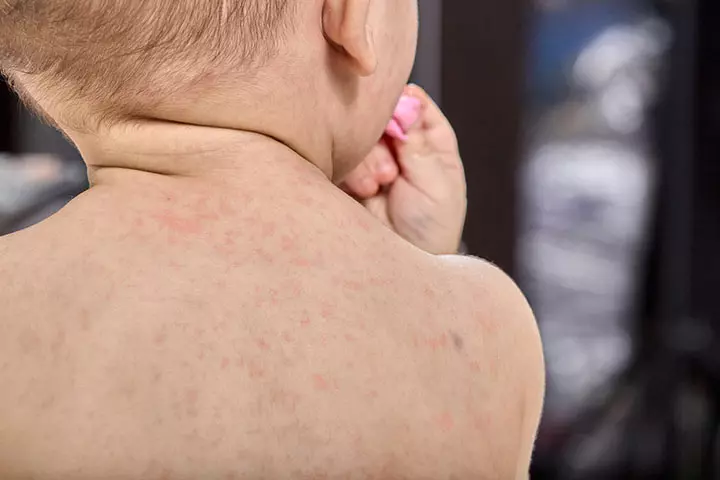
If your child misses an amoxicillin dose of the course, give it as early as you remember. But, if you remember just before the time for the next dose, then leave out the missed dose and continue with the regular schedule.
An overdose of amoxicillin may cause allergic reactions. A mild overdose does not pose any serious problems. However, an excess amount could damage your child’s kidneys, and lead to behavioral changes, confusion, severe skin rashes, pain in lower back, nausea, and less urination. In such cases, it is crucial to seek immediate consultation with a doctor.
How Can An Overdose Of Amoxicillin Be Treated?
In a case of amoxicillin overdose, the doctor may prescribe some other medicines to control the side effects, or insert a tube into the stomach to pump out the excess dose. Some supportive treatments involve diuretic medications to prevent damage to the kidney and provide fluids through an intravenous line.
Treatment duration and dose would depend on the extent of the effect on your child.
It is not just the overdose sometimes a normal amoxicillin dose could also have an adverse effect.
Amoxicillin Side-effects In Children
While taking amoxicillin, your child may experience certain discomforts. Consult your doctor if she exhibits any of the following symptoms (12):
- Vomiting, diarrhea, or stomach pain. In case of vomiting and nausea, you may try giving the medicine after meals
- Diarrhea gets severe and watery, contains blood or continues for more than four days
- White patches inside your child’s mouth and throat
- Soreness or itching around the vagina, in the case of girls
- Breathing or wheezing problems
- Blistering, redness, peeling of skin, yellowing of skin or eyes
- Some allergic reactions such as hives, skin rashes, itching or swelling of lips, face, and tongue
- Unusual bleeding or bruising
- Fatigue and weakness
- Heavy menstrual flow in girls
- Loss of appetite
- Decreased urination
- Burning sensation or pain while urinating
Some of the side effects are temporary. Once the body adjusts to the medicine, the symptoms will go away and do not need any medical assistance. However, take your child to the doctor to avoid any severe health issues.
 Research finds
Research findsAmoxicillin For Kids: Important Points To Remember
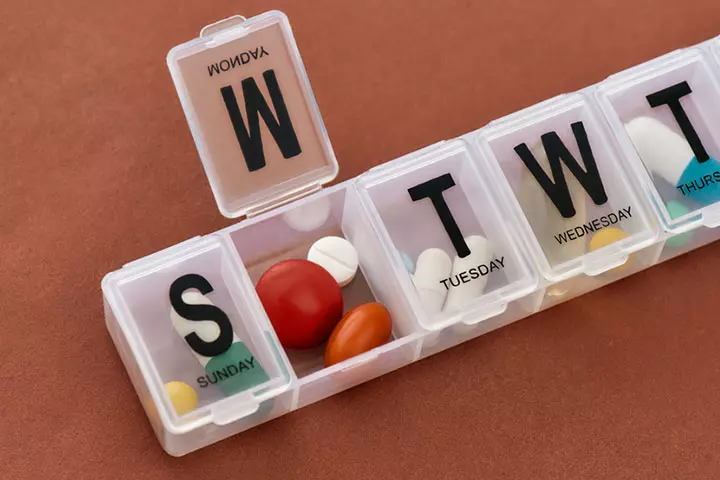
- It is necessary to complete the course of the antibiotic. If it is discontinued, the bacteria might multiply, thereby leading to the onset of infection again.
- Store the medicine at a cool temperature after you mix it.
- If your child has vomiting or diarrhea, then make them drink more water or any other fluid to replenish the loss.
- Do not give any medication for diarrhea unless it has been prescribed by your doctor.
- Give the amoxicillin dose at a fixed time every day and in the right amount.
- Your child’s teeth may look yellow or brown or might get gray stains. In such cases, visit a dentist and get their teeth cleaned up.
- Give the medicine only to the child for whom it has been prescribed. It should not be shared with other children, even if they have similar symptoms.
- Unless your doctor recommends, medicines containing paracetamol or ibuprofen should not be given with this antibiotic. Experts advise against using ibuprofen for kids to avert possible drug interaction.
- If your child has diabetes, then amoxicillin may interfere with the glucose tests giving false results. In such a case, you must ask the doctor for alternative sugar tests.
 Quick tip
Quick tipFrequently Asked Questions
1. Can amoxicillin be given to children with high blood pressure?
There are no specific directions for the antibiotic’s use in children with high blood pressure. The use and dosage may vary based on several factors. Speak to your child’s pediatrician in case of any concerns.
2. Can amoxicillin be given to children with heart problems?
The use of amoxicillin in children with heart problems depends on their specific condition and the advice of a pediatric cardiologist. Consultation with the doctor is advised to discuss the child’s risk.
3. Can amoxicillin be given to children with a history of seizures?
Some individuals with a history of seizures may be prone to antibiotic-induced seizures. Stay vigilant and discontinue use if you notice seizures in your child after administering a dose. Consult a doctor soon to seek a replacement antibiotic to continue the treatment course (13).
4. Can amoxicillin be given to a child with a compromised immune system?
Antibiotics can be given to a child with a compromised immune system, but it would depend on the specific situation and the doctor’s recommendation to treat the child (14).
5. How long does it take for amoxicillin to be eliminated from a child’s system?
The elimination of amoxicillin depends on several factors, such as the dosage, the child’s age, and whether the child has other problems. Your child’s pediatrician may be able to provide a specific duration of elimination based on your child’s dosage.
6. How does amoxicillin affect a child’s gut microbiome?
A study has revealed that gut microbiota diversity changes due to different antibiotics. Antibiotics disturb gut homeostasis and contribute to pathophysiology based on the patient’s genome and metagenome (15). Your child’s doctor may recommend dietary modifications to compensate for these changes in the gut microbiome.
Amoxicillin is a common and safe antibiotic for children to treat different bacteria-induced illnesses. However, even though it is widely used, it is better to stay informed about any medication given to children to maintain safety. The amoxicillin dosage for kids varies depending on the prescribed condition. Therefore follow your pediatrician’s advice and prescription for the antibiotic course. Remember to take the necessary precautions and look out for any adverse reactions in your children and consult a doctor when necessary.
Infographic: Amoxicillin Side Effects On Children
Amoxicillin could be prescribed in children by a healthcare provider to treat certain infections; however, there could be side effects when the medication is not given as per the dosage or for other reasons. Some common side effects of amoxicillin in children are listed in the infographic below.
Some thing wrong with infographic shortcode. please verify shortcode syntax
Illustration: Amoxicillin Dosage For Kids: Safety Uses And Precautions
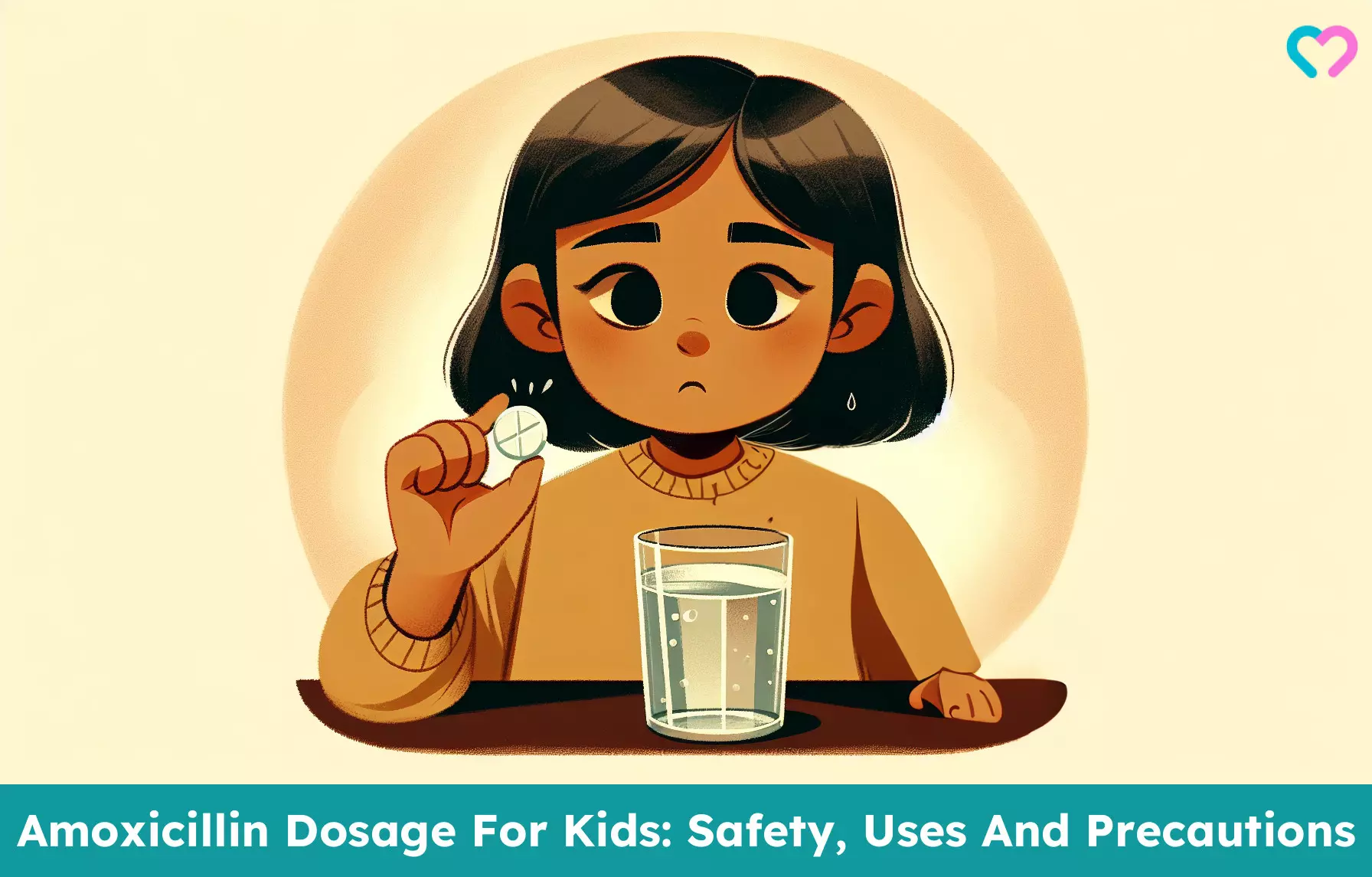
Image: Dalle E/MomJunction Design Team
References
- Penicillin antibiotics
https://www.medicinesinpregnancy.org/Medicine–pregnancy/Amoxicillin/ - Amoxicillin.
https://medlineplus.gov/druginfo/meds/a685001.html - Amoxicillin.
https://healthify.nz/medicines-a-z/a/amoxicillin/ - Amoxicillin for Acute Malnutrition in Children.
https://www.nejm.org/do/10.1056/NEJMdo005050/full/ - Amoxicillin.
https://www.mottchildren.org/health-library/d00088a1 - Lansoprazole Clarithromycin and Amoxicillin.
https://medlineplus.gov/druginfo/meds/a601067.html - C Darras-Joly et al; Synergy between amoxicillin and gentamicin in combination against a highly penicillin-resistant and -tolerant strain of Streptococcus pneumoniae in a mouse pneumonia model.
https://www.ncbi.nlm.nih.gov/pmc/articles/PMC163489/ - JM Langley and S Halperin; Allergy to antibiotics in children: Perception versus reality.
https://www.ncbi.nlm.nih.gov/pmc/articles/PMC2094872/ - Is it Really a Penicillin Allergy?
https://www.cdc.gov/antibiotic-use/media/pdfs/penicillin-factsheet-508.pdf - Otitis Media: Diagnosis and Treatment.
https://www.aafp.org/pubs/afp/issues/2013/1001/p435.html - Amoxicillin 250mg/5ml Oral Suspension Sugar Free BP.
https://www.drugs.com/dosage/amoxicillin.html#Usual_Pediatric_Dose_for_Skin_or_Soft_Tissue_Infection - Amoxicillin Monograph – Paediatric.
https://pch.health.wa.gov.au/~/media/Files/Hospitals/PCH/General-documents/Health-professionals/ChAMP-Monographs/Amoxcillin.pdf - Antibiotic-induced epileptic seizures: mechanisms of action and clinical considerations.
https://www.sciencedirect.com/science/article/pii/S105913112030248X - Infections in Immunocompromised Patients; St. Jude Children’s Research Hospital.
https://together.stjude.org/en-us/care-support/immunity-illness-infection.html - Disparate effects of antibiotics on hypertension | Physiological Genomics.
https://journals.physiology.org/doi/full/10.1152/physiolgenomics.00073.2018 - Olivia García Trallero et al.; (2019);Effect of the administration of a probiotic with a combination of Lactobacillus and Bifidobacterium strains on antibiotic-associated diarrhea.
https://www.ncbi.nlm.nih.gov/pmc/articles/PMC6609938/ - Use of penicillin antibiotics
https://www.medicinesinpregnancy.org/Medicine–pregnancy/Amoxicillin/ - Amoxicillin.
https://healthify.nz/medicines/a/amoxicillin/ - Amoxicillin.
https://www.mskcc.org/cancer-care/patient-education/medications/pediatric/amoxicillin?mode=large&msk_tools_print=pdf - Otitis Media: Diagnosis and Treatment.
https://www.aafp.org/pubs/afp/issues/2013/1001/p435.html - Common Pediatric Medications.
https://www.aapd.org/assets/1/7/rs_commonmeds.pdf
Community Experiences
Join the conversation and become a part of our nurturing community! Share your stories, experiences, and insights to connect with fellow parents.
Read full bio of Dr. Rajeev Ranjan

Dr. Cindy Rubin is a pediatrician and breastfeeding medicine specialist practicing in the Western Suburbs of Chicago. She did her undergrad at Stanford University, medical school at Georgetown, and pediatrics residency at the University of Chicago. After working at Loyola University Medical Center as an outpatient general pediatrician for 13 years, she opened her new practice, In Touch Pediatrics and Lactation.
Dr. Cindy Rubin is a pediatrician and breastfeeding medicine specialist practicing in the Western Suburbs of Chicago. She did her undergrad at Stanford University, medical school at Georgetown, and pediatrics residency at the University of Chicago. After working at Loyola University Medical Center as an outpatient general pediatrician for 13 years, she opened her new practice, In Touch Pediatrics and Lactation.
Read full bio of shreeja pillai
Read full bio of Swati Patwal
Read full bio of Dr. Joyani Das






